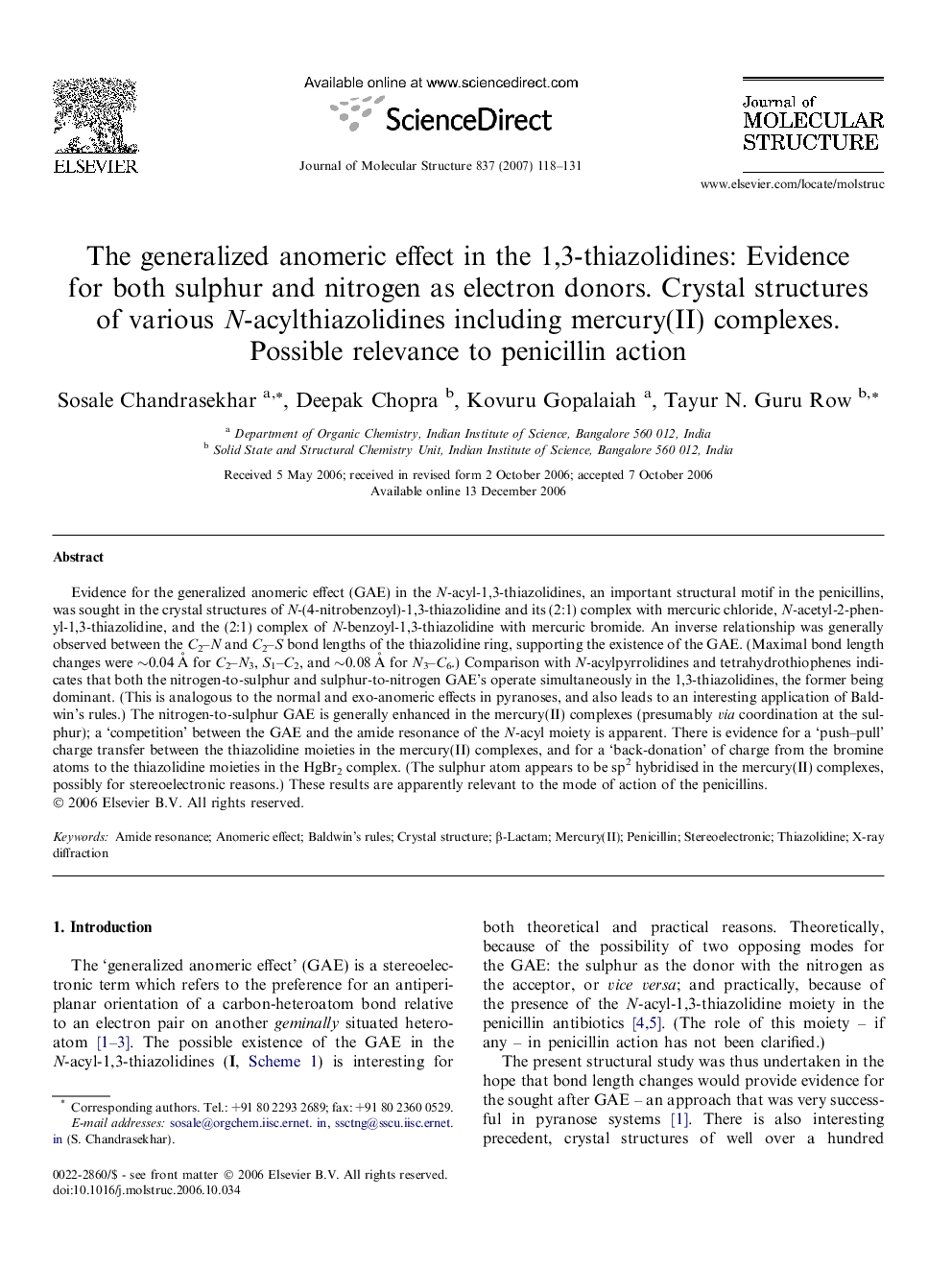| کد مقاله | کد نشریه | سال انتشار | مقاله انگلیسی | نسخه تمام متن |
|---|---|---|---|---|
| 1407915 | 1501901 | 2007 | 14 صفحه PDF | دانلود رایگان |

Evidence for the generalized anomeric effect (GAE) in the N-acyl-1,3-thiazolidines, an important structural motif in the penicillins, was sought in the crystal structures of N-(4-nitrobenzoyl)-1,3-thiazolidine and its (2:1) complex with mercuric chloride, N-acetyl-2-phenyl-1,3-thiazolidine, and the (2:1) complex of N-benzoyl-1,3-thiazolidine with mercuric bromide. An inverse relationship was generally observed between the C2–N and C2–S bond lengths of the thiazolidine ring, supporting the existence of the GAE. (Maximal bond length changes were ∼0.04 Å for C2–N3, S1–C2, and ∼0.08 Å for N3–C6.) Comparison with N-acylpyrrolidines and tetrahydrothiophenes indicates that both the nitrogen-to-sulphur and sulphur-to-nitrogen GAE’s operate simultaneously in the 1,3-thiazolidines, the former being dominant. (This is analogous to the normal and exo-anomeric effects in pyranoses, and also leads to an interesting application of Baldwin’s rules.) The nitrogen-to-sulphur GAE is generally enhanced in the mercury(II) complexes (presumably via coordination at the sulphur); a ‘competition’ between the GAE and the amide resonance of the N-acyl moiety is apparent. There is evidence for a ‘push–pull’ charge transfer between the thiazolidine moieties in the mercury(II) complexes, and for a ‘back-donation’ of charge from the bromine atoms to the thiazolidine moieties in the HgBr2 complex. (The sulphur atom appears to be sp2 hybridised in the mercury(II) complexes, possibly for stereoelectronic reasons.) These results are apparently relevant to the mode of action of the penicillins.
Journal: Journal of Molecular Structure - Volume 837, Issues 1–3, 30 June 2007, Pages 118–131